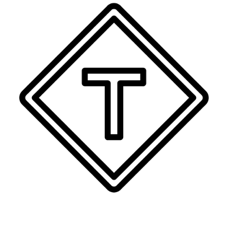Recently, I was with a group of senior leaders discussing how to develop more impactful leadership within their organization. A common camp in these conversations believes that value is best derived from leaders with strong technical expertise. Another camp champions the idea that impactful leaders can work collaboratively across the organization. Shorthand for this conversation is what I call T-Shaped leadership (short for Transformational Leadership). Technical or functional leaders (the vertical part of the T) have these capabilities:
- Deep technical or domain expertise
- Deliver individual results
- Discipline, credibility, and reputation
- Responsibility for definable parts of a project
- Work independently without a lot of supervision
- Strong internal network
- Focus on short-term, tactical tasks
- Responsible for a job or area
Leaders with a more enterprise, cross-functional view (the horizontal part of the T) have these capabilities:
- Broad business perspective and ability to connect the pieces
- Gain leverage through synergistic and collective results
- Integrative, holistic, cross-disciplinary perspective and focus
- Enable collaboration on projects
- Work interdependently with and through others
- Strong internal and external networks
- Focus on long-term, strategic, transformation projects
- Mentor, thought leader, partner with others
The ideal leader has a balance of both vertical and horizontal. In “Mastering Leadership,” Robert Anderson and William Adams describe this as “An ecology of opposites in tension.” An “either/or” approach limits the insights and deprives the organization of the benefits of both types of leadership. Instead, holding the two seemingly opposite or competing views in tension helps find the right balance for the organization. Both are necessary for the healthy functioning of an organization.
For most leaders, however, finding a better balance requires a transition of holding less tightly to the functional and adding more of the cross-functional capability. Research shows that horizontal leaders are more valuable to an organization because of the leverage, collaboration, and synergy they create. Technical or functional leaders deliver individual results, while horizontal, cross-functional leaders deliver integrative, cross-disciplinary results. The ability to solve cross-functional problems is a skill not many have, and organizations are willing to pay for leaders who can create new value for customers different from competitors.
But transforming from the vertical to the horizontal (without completely losing the vertical) is a challenging transition. How can a leader transform themselves from a primarily vertical focus that has made them successful, credible, and helped them deliver results to a more horizontal form of leadership requiring behaviors that they might not yet have?
Here is what we know: “What got you here, won’t get you there.” In other words, what makes a vertical leader successful will actually hold them back from becoming a horizontal leader. Why? They each require different skill sets. Horizontal leadership requires working with and through others, while vertical leaders usually work independently. Horizontal leadership requires Emotional Intelligence while vertical leaders depend more on their own intellectual capacity. People skills on the one hand and technical skills on the other. Holding to the vertical too tightly will inhibit a leader’s ability to work collaboratively with others.
So why change? Why add the horizontal aspects to the vertical strengths gained through years of experience? Because the higher one gets in an organization, the problems become more complex and can’t be solved just vertically—they require interdependent, cross-functional skills to find new solutions to complex challenges. Vertical and horizontal leadership are necessary for organizations. But to create collaborative, transformative solutions, horizontal leadership is required. T-shaped leadership is about transformation—transforming organizations by first transforming leadership.






